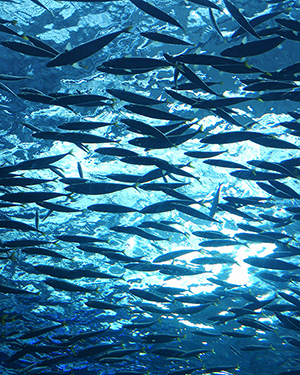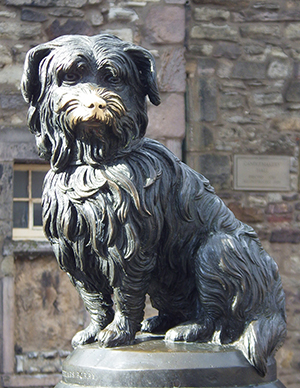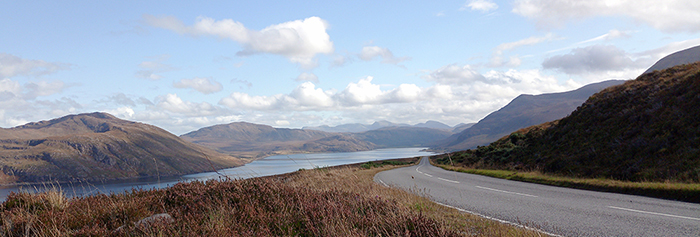 Before I went to the UK, I made a stop in Calais. A few months before my departure I had seen a documentary about the construction of Europe's largest aquarium on TV, Nausicaá. This is in Boulogne-sur-Mer, near Calais. As I approached the coast I noticed signs saying "KEEP RIGHT". That surprised me, because the French are not really known to speak a foreign language. When I came to the coast and England became visible on the other side of the English Channel, I also realized the meaning of these boards.
Before I went to the UK, I made a stop in Calais. A few months before my departure I had seen a documentary about the construction of Europe's largest aquarium on TV, Nausicaá. This is in Boulogne-sur-Mer, near Calais. As I approached the coast I noticed signs saying "KEEP RIGHT". That surprised me, because the French are not really known to speak a foreign language. When I came to the coast and England became visible on the other side of the English Channel, I also realized the meaning of these boards.
The bike was safely parked in a garage in Calais and I took the train to Boulogne-sur-Mer. From the train station there are about 20 minutes walk to the Nausicaá National Sea Center. I paid the entrance and went to the part where the huge aquarium is. There, a deepwater environment was recreated. The atmosphere and background music that prevail are very reassuring, all in darker shades and you learn a lot about the life of the animals in the deep sea and about the problems they are struggling with today. Nausicaá is not a zoo with fish where you can find the classic plates with name, origin, size, food. It is a research station that wants to show everyone what kind of biodiversity we still have in our oceans and that it is in danger. But of course, it's great to see all these creatures, to be surrounded by them in a tunnel and to see them gliding in the water. You walk through the aquarium, read what is on the walls and look at the animals and suddenly you come into a large hall and your jaw hits the ground. 20 meters wide, 5 meters high and 38 inches thick. There is a window that allows a direct view of the great basin. You can sit down there or just stop and watch how sharks, fishes and rays make their rounds. Just breathtaking. If you have never been there, you should definitely go there.
The next day I took the ferry to Dover and drove from there on to London. In the suburb of the city I stopped at a campsite. The price for the night was about the same as in Norway. 22 pounds to set up a tent for one night. Before heading north, I stopped at the Ace Café London for breakfast and drove on. In the evening I stopped again on a campsite, 18 pounds, and this time the campsite was in the middle of nowhere. I searched the internet for cheap B&B or hostels, and found some where I paid the same price for the night as on the campsites. When I found some, I decided to stop camping in this country. Not only the prices were decisive, but also the weather. The temperatures were about the same as in Norway, and there I was always camping, only here was the humidity higher. It rained occasionally and was foggy on the mountain peaks, and this lowered the perceived temperature. You also have to think about paying 18 pounds for a campground and 18 pounds for a hostel, so what's more convenient?

After watching the Falkirk Wheel for a few turns, I drove on to the Kelpies. I had already seen pictures of them, but I did not expect them to be that big. These are 30-meter-high steel sculptures depicting two Kelpien, water spirits, in horse form. I wonder how horses react to these sculptures. Do you recognize the horse heads as such or do you only see the sculptures as big steel things?
Edingburgh was my destination for the next day. The sun was shining and it was untypically warm for Scotland. At first I walked a bit aimlessly through the old town, looked at a few things that I had written out and visited a few locations of Trainspotting. In the afternoon I visited a free walking tour. The free tours are now available in almost every major city, giving you a brief overview of the most important places and historical events. After the tour I walked a bit through the city and went back to the station. My ticket was not accepted at the entrance to the platform. What I did not understand. A man who worked there told me then that the ticket was valid only after 18.30. So I had to kill another half hour and went to the next pub.
My journey continued to Inverness, to the start of the North Coast 500 (NC500). A 500-mile route along the north coast of Scotland. It was cloudy and windy. The mountain peaks were partly covered with thick fog, so I had to drive slower. When I arrived in Inverness, I found out that I had driven the Snow Road, another scenic route of the Scottish Highlands. I could not see much because of the weather conditions, but what I saw was great. I stayed in Inverness at the Youth Hostel and was could park my motorcycle outside the front door, away from the parking lot and the street. There was already another motorcycle there and I talked to the driver. He just left the NC500 behind and warned me that it was not that easy, many single track roads, sheeps and their need on the road, people stopping in the middle of the road to take pictures, potholes, etc. I might just make 100 miles (160 km) a day.
I started the next day, all along the coast to John O'Groats, the end of the road. You can not get further. After a short stop I drove on to the northernmost approachable point of Scotland, Dunnet Head. The weather was getting better and the landscape revealed itself as a real gem. I made it to Durness. There I stayed again in a youth hostel and visited a small cave, which was right next door.
The next day I continued on the NC500. The scenery breathtaking. The Highlands are more impressive than they are known from the photos and movies, after each turn you could have stopped and enjoy the scenery and take pictures. But since you also are riding a motorbike, you just enjoy ride in such an area. Here, in the west, there were several single track roads. Single-lane roads with bulges to let oncoming traffic pass or to overtake slower vehicles. In Switzerland, there are also such routes, but on most of them a car and a motorcycle can pass each other, not in Scotland. I drove to Gairloch. 260 km that day, I wondered which roads the other motorcyclist from Inverness rode that he managed only 160 km a day. I did not drive fast, but made good progress.
The last day on the NC500 took me again to fabulous landscapes to Apple Cross. With Apple Cross I reached also the first 20'000 km on my journey. The way covered by ferries not counted. After a short stop I went over another single track pass to Oban, where was once again washing day announced. Yes, that too is part of a long-term journey. From Oban we headed to the southernmost point of Scotland, Mull of Galloway. The next day we went by ferry to Northern Ireland.



